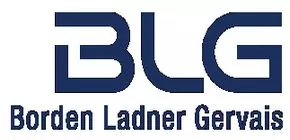- with Senior Company Executives, HR and Finance and Tax Executives
- with readers working within the Accounting & Consultancy, Banking & Credit and Insurance industries
The recent All Families Are Equal Act, 2016 (the "Act") amends various existing pieces of legislation in connection with the goal of establishing new rules related to parentage (see the amendments here). For a general overview of the legislative changes brought about by the Act, please see our bulletin here.
Of importance to hospitals are the amendments to sections 9 to 11 of the Children's Law Reform Act. Section 9 introduces the concept of a "pre-conception parentage agreement," which allows potential parents to contractually define their parentage status. Sections 10 and 11 update Ontario laws to provide for surrogacy agreements, with a standard format allowing for up to four legal parents.
In respect of surrogacy, perhaps one the of the most significant changes for hospitals and clinicians (providing care in surrogate birth situations) brought about by the Act is that, if certain conditions are met, the intended parents will share in the rights and responsibilities of parents with the surrogate in respect of the infant after its birth for the first seven days of the infant's life, unless it is otherwise provided for in the surrogacy agreement the parties entered into.
From a practical perspective, one of the effects is that intended parents will be equally ranking substitute decision-makers with the surrogate, in respect of treatment decisions for the newborn.
It is, therefore, important that the health-care providers involved in a surrogate birth know whether the required conditions have been met that will bring the surrogacy situation under certain provisions of the Act that, in part, provide for the intended parents to share in the rights and responsibilities of parentage for the first seven days of the infant's life (unless the surrogacy agreement provides otherwise) as mentioned above. These conditions are:
- The surrogate and one or more persons entered into a written surrogacy agreement before the child was conceived;
- The surrogate and the intended parent(s) each received independent legal advice before entering into the agreement;
- There are no more than four intended parents who are parties to the agreement; and
- The child was conceived through assisted reproduction.
While these conditions appear quite clear, the challenge for hospitals and health-care providers will be in determining the best way to establish whether these conditions have been met without taking on a role that they ought not to take. A great resource in this regard is the Ontario Hospital Association's recent publication, Surrogacy Arrangements in Ontario, Guidance for Hospitals, Second Edition. It has been written to help hospitals and other health-care providers navigate some of the complexities around surrogacy arrangements, and assist in the development of internal practices and policies to guide clinical and operational decision-making. This second edition incorporates an overview of legislative changes since 2016, including their potential impact on clinical care and hospital management of surrogacy cases. New tools, including a Surrogacy Process Checklist have also been incorporated.
To access this resource, OHA members can visit the Clinical and Patient Care Issues webpage under the "Surrogacy" topic area or access it directly here. (OHA member login is required.)
Non-members may access it here for a nominal fee.
The content of this article is intended to provide a general guide to the subject matter. Specialist advice should be sought about your specific circumstances.



